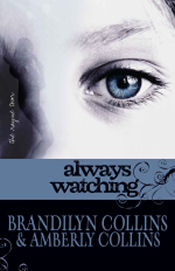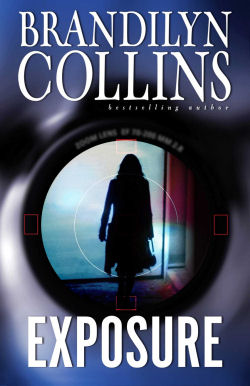|
This
month we’re looking at ways
to study the use of symbolism in others’ works so we can better employ
it in our own. How best to study symbolism? This is a bit of a
chicken-and-egg problem, I’ll admit. You have to understand symbolism
to study it in stories; you have to able to find symbolism in stories
to study it. Give yourself time; understanding of the concept doesn’t
come overnight.
One way to study symbolism is to
watch for it in movies, because not all novels employ symbolism, but
movies usually do. Remember, you’ll have to watch carefully to see it.
Symbolism is supposed to be subtle.

One tip—if you’re going to a
movie, don’t miss the opening credits. The way these credits are
presented are often full of symbolism that will lead you to at least
one aspect to watch for in the movie itself. Take for example the movie
Insomnia from a few
years ago, starring Al Pacino and Robin Williams. As the letters came
upon the screen, they went from blurry to focused to blurry again,
fading into each other. Now you can bet this was purposeful. This
presentation was symbolic of the blurred lines between morally right
and morally wrong that would be portrayed through Al Pacino’s character
of a cop gone . . . bad? Well, maybe. Even as the letters blurred from
one name to the next, behind them were these dots that never went away.
I couldn’t tell what the dots were (more of the “blurring” symbolism),
but their constancy told me that if they ever became clear enough for
me to perceive, whatever they were would be of constant background
importance to the entire story. Turned out these “dots” became the
title of the movie—Insomnia. I hadn’t known why the
movie carried that title. But seeing this, I knew insomnia would
somehow form a constant backdrop to the story. And, indeed, it did.
During the five to six days in which the story takes place—summer in
Alaska, when there’s twenty-four hours of daylight—Pacino’s character
doesn’t sleep at all. You see how this plays into the symbol of
blurring? Day and night become indistinguishable. On the first day
Pacino arrives in Alaska, he wants to go to a high school and has to be
reminded it’s 10:00 p.m.
Besides
movies, of course, you can look for the use of symbolism in novels.
Remember, many novels don’t use symbolism, so don’t try to “read”
something into the writing that’s not there. If you’re not used to
knowing what to look for, it may be best to look through the novel after
you’ve read it to see what you might pick up. What recurring places,
things or events enhance the message or aura of the story? Or perhaps
foreshadow what happens at the end of the book?
Many
novels these days run
discussion questions for book clubs at the end. These often include
questions that deal with the symbolism of the story. (On my own Web
site I have discussion
|
questions
for quite a few of my books. If
they’re available you’ll find the link under the book cover on the main
page for each book.) These questions can tend to be spoilers, so wait
to read them after you’ve read the novel. But they’re often great tools
for helping you dig for symbolism within the story.
If you read Exposure,
my latest release, you’ll see that that this suspense is about fear.
The surface plot focuses on Kaycee and Lorraine, and how their fears
drive them. If you look a little more closely, you’ll notice that many
of the supporting characters have some particular fear that affects
their choices. And you’ll see that even as characters can easily spot
each others’ fears and the negative results, they’re less apt to spot
how they succumb to their own.
Or take Amber Morn,
final in my Kanner Lake series. This is a hostage situation. You’ve got
the bad guys—the hostage takers—and the good guys—the hostages. Easy
enough to figure out. But what is the book’s deeper message about
spiritual truth and deception, and how we sometimes willfully refuse to
embrace the former? How do various characters symbolize those who will
see and those who won’t? And the penultimate chapter—how do its events
deepen the symbolism?
In my ten-year journey to
publication in fiction, I studied symbolism in books and movies
constantly. At movies I paid attention to everything.
In books I read with pen in hand, marking symbolic aspects, noting when
I first noticed each, then going back to see if there had been an
earlier occurrence that I’d missed. The more I studied, the more I was
able to see symbolic occurrences right away. And the more effectively I
was able to employ the technique myself.
Next month—how to use symbolism
in your own writing.

|